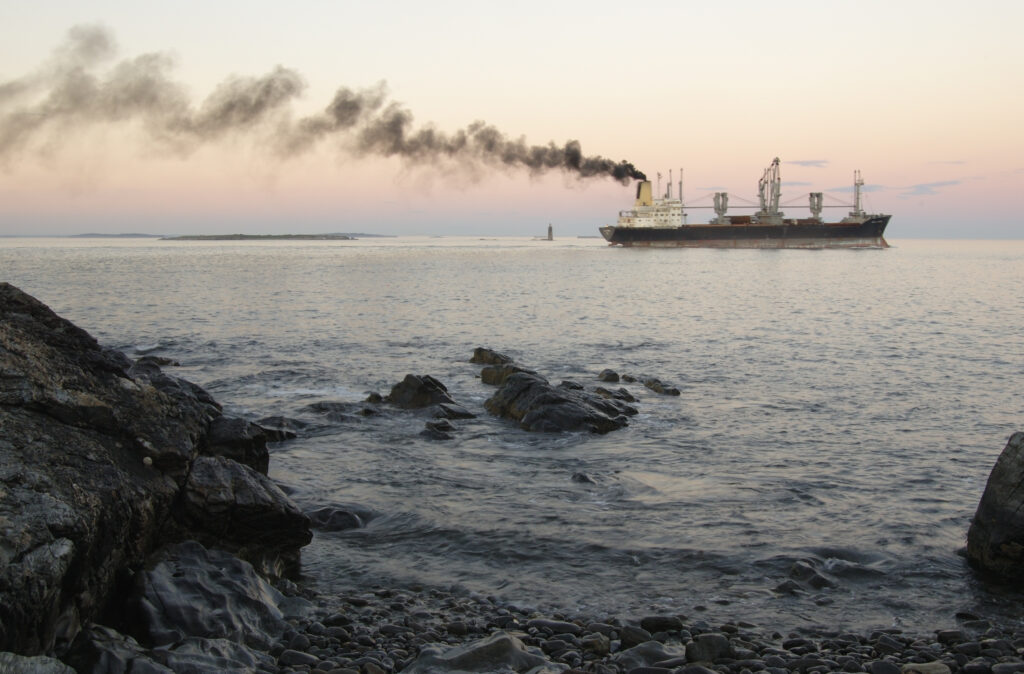Maritime transport is fundamental to global commerce, facilitating around 90% of global trade by volume. However, it is also a significant source of greenhouse gas (GHG) emissions, accounting for approximately 2% to 3% of the world’s carbon emissions. Reducing these emissions is viewed as both an environmental necessity and an economic imperative. The international nature of shipping makes it challenging to regulate through national policies.
The leading global regulatory body for this sector is the International Maritime Organization (IMO), a specialized agency of the United Nations, headquartered in London. The IMO has been actively advancing efforts to address GHG emissions. Its initial strategy from 2018 aimed to cut emissions by 50% by 2050. This target was significantly revised in July 2023, with the IMO adopting a more ambitious strategy aiming for net-zero GHG emissions from international shipping “by or around 2050”.

Beyond carbon, the industry has also focused on reducing other harmful pollutants such as sulfur oxides (SOx), nitrogen oxides (NOx), and particulate matter, with technologies like scrubbers and catalysts being used for compliance with existing regulations like the IMO 2020 sulfur cap and IMO Tier III NOx standards. The industry itself is highly diverse, encompassing companies with large fleets as well as smaller operators, and different vessel types have varying operational needs, which adds complexity to the challenge of implementing widespread change.
Between April 7 and 11, 2025, the IMO approved a new regulatory package, the IMO Net-Zero Framework, during its Marine Environment Protection Committee (MEPC 83) session. This framework is a significant step towards achieving net-zero emissions by or around 2050. It is the first in the world to combine mandatory emissions limits and GHG pricing across an entire industry sector, introducing a global fuel standard and a pricing mechanism through compensation units or contributions to an IMO Net-Zero Fund. These measures are set for formal adoption in October 2025 and expected entry into force in 2027.
In late March 2025, discussions at the maiden Africa Strategic Summit on Shipping Decarbonization in Abuja, Nigeria, underscored the continent’s potential and the need for sustainable practices. Nigeria’s Minister of Marine and Blue Economy urged leveraging Africa’s renewable energy potential to become a global leader in green shipping. Similarly, the UK launched its Maritime Decarbonisation Strategy on March 25, 2025, setting ambitious goals for carbon-free shipping by 2050.
Expert commentary indicates that while the industry is “stepping up” in areas like target-setting and advocacy, progress remains “weak” in implementing initiatives like green premium offerings and green corridors. They point to challenges such as a lack of clarity on the IMO’s future measures and uncertainty regarding fuel pathways. Experts note the difficulty of decarbonizing a diverse industry and the apprehension among shipowners about investing in new, expensive fuel technologies without guaranteed infrastructure and regulatory support. However, signs of progress are noted, including ships paying for emissions in European ports from early 2024 and the emergence of new dual-fuel vessels. These recent events highlight the critical phase the industry is in, transitioning from setting targets to implementing concrete, internationally coordinated measures while navigating significant practical and economic challenges.
Achieving net-zero in maritime transport requires transformational change, including major investments in alternative fuels such as ammonia, hydrogen, and methanol, alongside technological advancements and infrastructure development. The transition faces challenges related to costs, safety, and fairness, making international cooperation essential. The concept of green corridors is being explored as a way to accelerate decarbonization. This shift affects not just environmental policy but also global trade costs, supply chains, air quality in port communities, and job security for maritime workers. A just transition is pivotal to ensure fairness for developing nations and professionals in the shipping industry. Watch for progress in alternative fuel supply chains, port infrastructure, and green corridor initiatives, as these developments will shape the industry’s future. Continued international collaboration and concrete action are essential to the success of maritime decarbonization.
This Spotlight was originally released with Volume 4, Issue 5 of the ICAS MAP Handbill, published on May 27, 2025.
This issue’s Spotlight was written by Kailyn Provitt, ICAS Part-Time Research Assistant.

Maritime Affairs Program Spotlights are a short-form written background and analysis of a specific issue related to maritime affairs, which changes with each issue. The goal of the Spotlight is to help our readers quickly and accurately understand the basic background of a vital topic in maritime affairs and how that topic relates to ongoing developments today.
There is a new Spotlight released with each issue of the ICAS Maritime Affairs Program (MAP) Handbill – a regular newsletter released the last Tuesday of every month that highlights the major news stories, research products, analyses, and events occurring in or with regard to the global maritime domain during the past month.
ICAS Maritime Affairs Handbill (online ISSN 2837-3901, print ISSN 2837-3871) is published the last Tuesday of the month throughout the year at 1919 M St NW, Suite 310, Washington, DC 20036.
The online version of ICAS Maritime Affairs Handbill can be found at chinaus-icas.org/icas-maritime-affairs-program/map-handbill/.

The Institute for China-America Studies is an independent nonprofit, nonpartisan research organization dedicated to strengthening the understanding of U.S.-China relations through expert analysis and practical policy solutions.
1919 M St. NW Suite 310,
Washington, DC 20036
icas@chinaus-icas.org
(202) 968-0595
© 2025 INSTITUTE FOR CHINA-AMERICA STUDIES. ALL RIGHTS RESERVED.